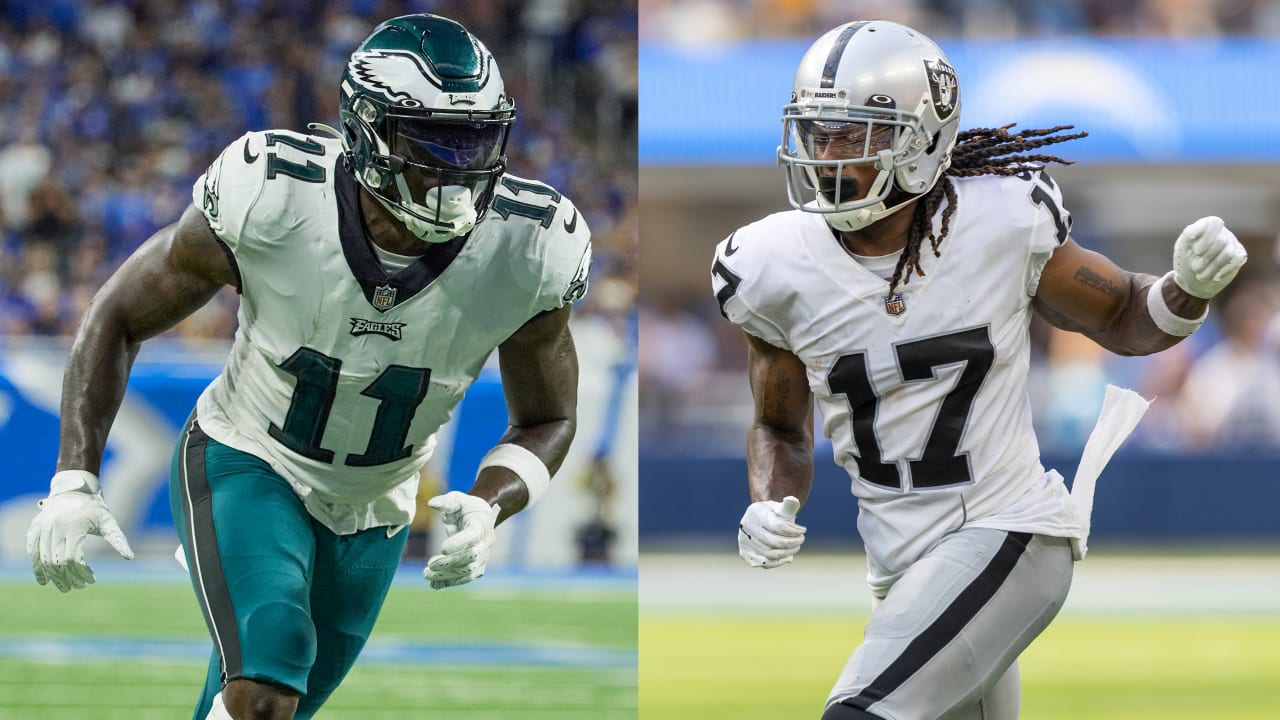
Eleven quarters and 11 minutes.
That’s the average amount of regular-season game time — just short of three full games — that it took for top-tier wide receivers who switched teams since 1997 to have their usage, production and new benchmarks calibrated (assuming they played at least 65 percent of snaps).
To oversimplify my findings, wide receiver data looks different in a player’s first eleven quarters and 11 minutes with their new team. In some cases, it takes time for chemistry to form. In others, wide receivers provide their teams with an early edge because defenses are caught off-guard, with new tendencies, plays and formations to adapt to. Coaches also bring their own tendencies and influences from past experiences to the table as well.
This offseason, several big-name receivers changed teams, while a few had new coaches or quarterbacks join them. And several of these players enjoyed eye-popping debuts.
Let’s look a little deeper at three players who were traded (the Raiders’ Davante Adams, the Dolphins’ Tyreek Hill and the Eagles’ A.J. Brown), one who is working with a new head coach (the Vikings’ Justin Jefferson, who now plays for Kevin O’Connell) and one who is catching passes from a new QB (the Colts’ Michael Pittman Jr., who added Matt Ryan as a teammate).
In Week 1, the league’s top three earners in target share were Adams (48.6 percent), Brown (44.8) and Hill (38.7), per Next Gen Stats. Jefferson (35.5) was sixth and Pittman was 26.5 percent. Obviously, not all defenses faced were the same, and the situations and game flows varied, but this pattern is in line with past examples — like Terrell Owens in Week 1 of 2004, when he scored three TDs on eight receptions (11 targets) against the Giants in his Eagles debut. Furthermore, the top three in air-yard share in Week 1 were Brown (72.8 — this is absurdly good), Jefferson (70.3) and Adams (57.7), while Hill (45.0, ninth) and Pittman (34.7) also registered among the best in the league. Narrowing this down to air-yard share among wide receivers only, the results are even more compelling: Adams (79.6, first), Brown (76.5, second), Jefferson (67.5, third) and Hill (56.8, fifth) are in the top five. Pittman’s percentage (39.4) is a bit closer to a single-game average for a WR1 in a run-heavy offense.
This one-week sample size is obviously very small, and there is a degree of a “get the ball to the best player” strategy. Plus, these guys happen to be among the NFL’s very best at their position.
But, with history helping us see how long the advantage lasts for top-tier receivers in new situations, let’s together track what might happen next.
This news is republished from another source. You can check the original article here


